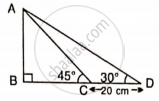Advertisements
Advertisements
प्रश्न
Find PQ, if AB = 150 m, ∠P = 30° and ∠Q = 45°.
.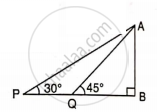
उत्तर
From ΔAPB
tan 30° = `"AB"/"PB"`
`(1)/sqrt(3) = (150)/"PB"`
PB = `150sqrt(3)`
PB = 259.80 m
Also, from ΔABQ
tan 45° = `"AB"/"BQ"`
1 = `(150)/"BQ"`
BQ = 150 m
Therefore,
PQ = PB - BQ
PQ = 259.80 - 150
PQ = 109.80 m
APPEARS IN
संबंधित प्रश्न
Find angle 'A' if :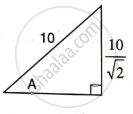
Find AD, if :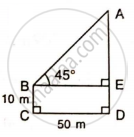
Find the length of AD.
Given: ∠ABC = 60o.
∠DBC = 45o
and BC = 40 cm.
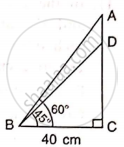
In trapezium ABCD, as shown, AB // DC, AD = DC = BC = 20 cm and ∠ A = 60°. Find: length of AB
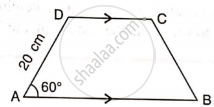
In trapezium ABCD, as shown, AB // DC, AD = DC = BC = 20 cm and A = 60°. Find: distance between AB and DC.
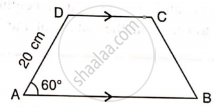
In the given figure, AB and EC are parallel to each other. Sides AD and BC are 2 cm each and are perpendicular to AB.
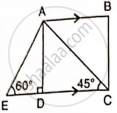
Given that ∠ AED = 60° and ∠ ACD = 45°. Calculate: AE.
In right-angled triangle ABC; ∠ B = 90°. Find the magnitude of angle A, if: AB is √3 times of BC.
In right-angled triangle ABC; ∠B = 90°. Find the magnitude of angle A, if:
BC is `sqrt(3)` times of AB.
A kite is attached to a 100 m long string. Find the greatest height reached by the kite when its string makes an angles of 60° with the level ground.
Find AB and BC, if:
